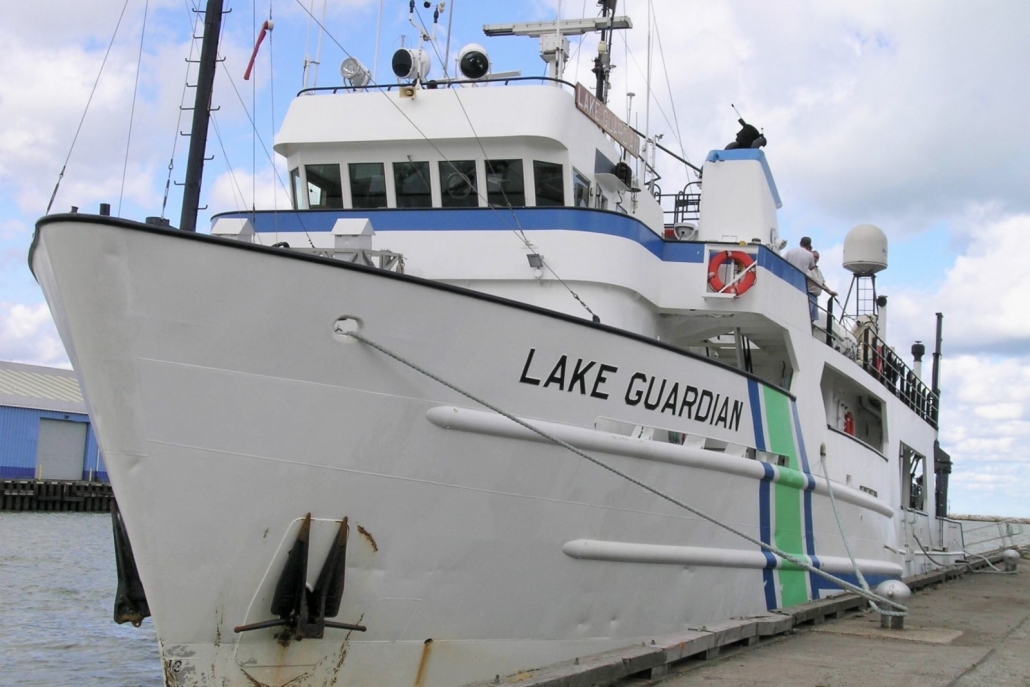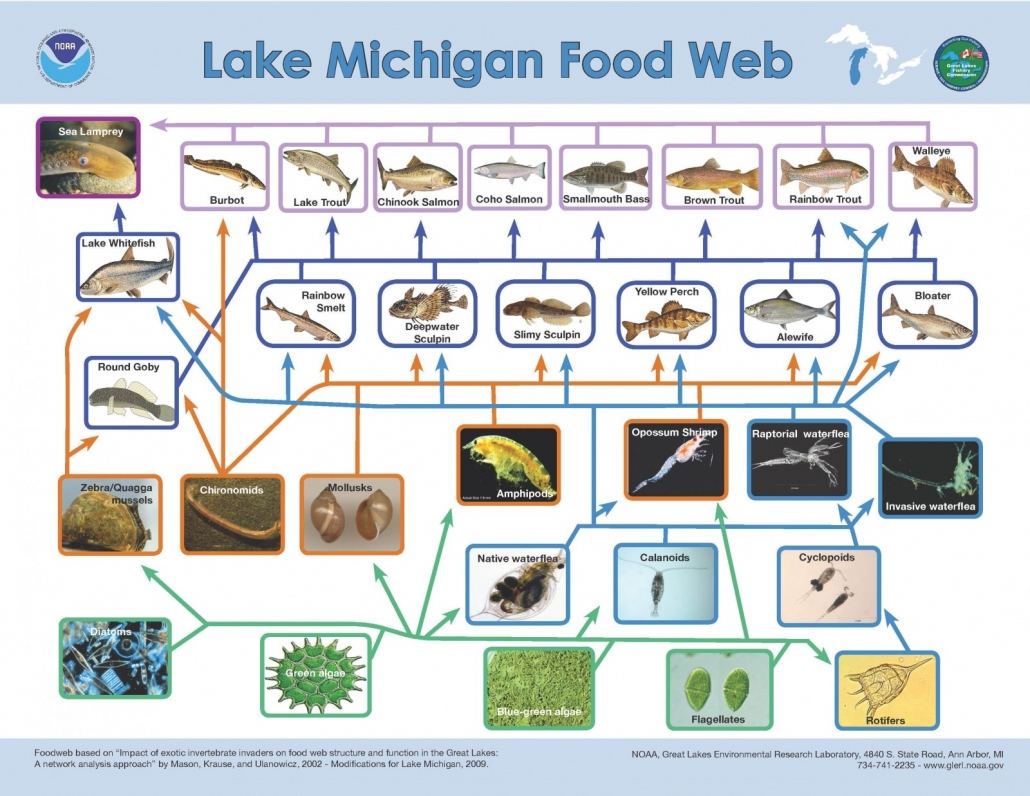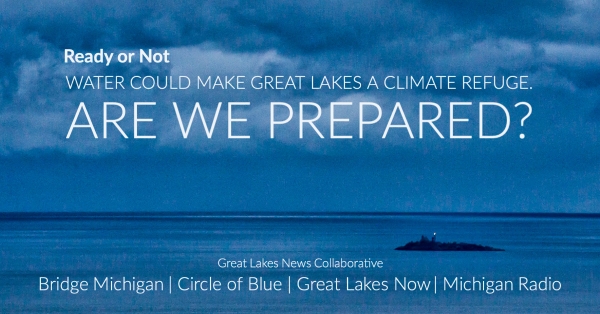Right now, scientists are on a ship taking samples and measurements of the Great Lakes. They’re trying to determine how the lakes will fare this year and watching for trends.
One trend, the warming climate, could mean changes for the base of the food web in the lakes. But, the researchers are not yet sure what those changes might be.
Annie Scofield is a Life Scientist at the U.S. Environmental Protection Agency’s Great Lakes National Program Office in Chicago. But she’s not in Chicago.
“Right now, I’m out on the R.V. Lake Guardian, which is our research vessel that does this spring and summer surveys, as well as a lot of other surveys over the course of the year.,” she said over the phone.
She manages the USEPA’s the long-term biology monitoring program.
The Lake Guardian has been visiting the lakes, monitoring changes since the 1980s. It can check conditions in all five lakes in about a month. When we talked, the ship was headed for Lake Erie, the fourth lake visited during this spring survey.
“Basically, we’re just trying to understand what is going on in the lakes and how that’s going to affect the rest of the food web as well as water quality, that’s really important as a drinking water source for people,” Scofield said.
Think back to grade school when you first learned about the food web. It all starts with microscopic plant life and builds from there. Among many other things, scientists are studying how the bottom of the food web in the Great Lakes is doing.
One thing Scofield and other scientists are finding is changes in diatom populations. Diatoms are microscopic algae. Tiny organisms called zooplankton and some just-hatched fish like to eat diatoms. Those little fish either grow up or they’re eaten by bigger fish, the kinds people like to eat.
Algae such as diatoms are sensitive to water quality changes. The Great Lakes National Program Offices says diatoms can serve as the first indicators of nutrient and contaminant changes such as phosphorous runoff from farm fields and lawns. And they respond to physical changes such as climate.
“One area of thought is that because of climate change, the productivity of the lower food web may decline,” said Doran Mason.
He’s a Research Scientist at the National Oceanic and Atmospheric Administration’s Great Lakes Environmental Research Lab in Ann Arbor.
There are thousands of kinds of diatoms and many kinds of other algae. Mason says some of them like cold water and grow during winter. So, warming water in the lakes is bad for them.
Other kinds of diatoms and algae actually LIKE warmer water.
“Our best guess, given what we know is with warm water temperatures that are projected with climate change, that might help sustain and grow the bottom of the food web,” he said.
The work that the scientist onboard the Lake Guardian are doing should help shed some light. Looking at those diatoms and other algae can help determine how the climate is changing things.
Onboard the the research vessel Annie Scofield says milder winters are good for those diatoms that like warmer water.
“What we think is that we’re seeing increases in this particular type of algae in response to, you know, less ice on the lakes in the winter and warmer temperatures.”
Beth Hinchey is Scofield’s supervisor back in Chicago. She says sure, maybe warmer waters are good for some of these types of algae.
“This diatoms complex is thriving, and that could signal changes in how the rest of the food web functions.”
And that sounds like good news. But, it’s a complicated business, trying to figure out how all the changes in the Great Lakes affect things. One thing can benefit some algae at the base of the food web while other algae are being harmed.
Hinchey says if you look at diatom species overall, they’re being pressured by pollution, by climate change, and by invasive species.
“Diatoms are preferred prey for fish and the zebra mussels and quagga mussels like them as well. So we’ve seen big reductions in some of our diatom species since the invasion of the mussels. That points to less food for fish.”
There’s that good algae and then there’s algae that can harbor toxic bacteria. The population of some of the good algae has been hit hard by invasive quagga mussels. They’re spread across every lake except Superior.
Ed Rutherford is with NOAA’s Great Lakes Environmental Research Lab. He says the quagga mussels are picky eaters.
“They like the good green phytoplankton, but they selectively reject the harmful algae that causes harmful algal blooms, which is called microcystis.”
So, the invasive mussels are gobbling up some of the good algae and leaving the bad stuff in the water.
So, the EPA’s Lake Guardian research vessel needs to keep monitoring all these vast and complex changes in the Great Lakes to try to determine what it all means for the bottom of the food web where life starts in the Great Lakes.
Ready or not — the Great Lakes as a climate refuge
The Great Lakes region is frequently touted as one of the most climate-resilient places in the U.S., in no small part because of its enviable water resources. But climate change threatens water quality, availability, and aging water infrastructure by exposing existing vulnerabilities and creating new ones. In this series, members of the Great Lakes News Collaborative explore what it may take to prepare the Great Lakes region for the future climatologists say we can expect.
Funded by the Charles Stewart Mott Foundation, the collaborative’s four nonprofit newsrooms — Bridge Michigan, Circle of Blue, Great Lakes Now at DPTV and Michigan Radio — aim to elevate discussion, amplify the voice of Michigan residents and produce action that protects the region’s waters for future generations. While Mott provides financial support, our public service journalism is produced independently.





